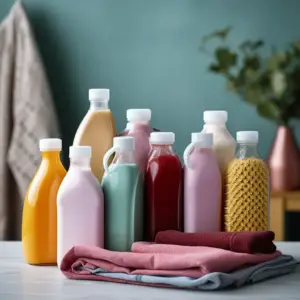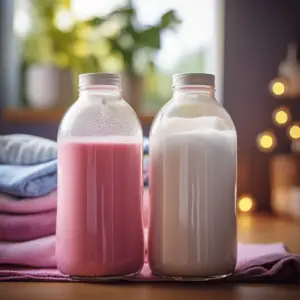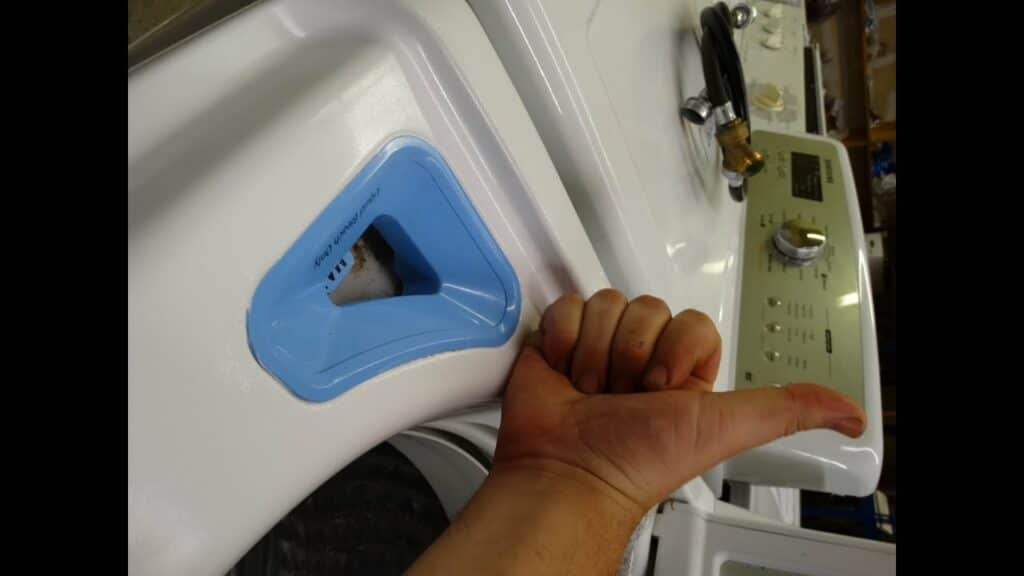Fabric conditioning or softening agents allow the fibers of your garment to move smoothly against one another reducing the tension in the fibers and the friction between them. Without this tension and friction, the fabric is likely to last longer since these aspects contribute greatly to the wear and tear of your clothes.
Using fabric conditioners gives a lustrous appearance to clothes that would otherwise look haggard and old. Add to that a lovely fragrant scent that pleases the senses, and it is not difficult to understand why fabric softener is such a prized addition to your shopping list.
Bleach is sold as a laundry product but it is not in itself a cleaner but a disinfectant. Stubborn stains are usually stains that have bonded to the fibers of the garment meaning they can only come off by being broken down on a molecular level.
Bleach does just that and just like in the process of killing bacteria and microorganisms, bleach breaks down the basic structure of stubborn adherent stains making it easy for the stain to get absorbed in the cleaning water and get washed away.
Fabric softener and bleach perform vastly separate tasks within one laundry cycle and have no business mixing.
The answer therefore to the question above is no, but there is more.
Table of Contents
Why you cannot put fabric softener in the bleach dispenser

How bleach dispensers work
Once the bleach is put in its designated dispenser, the bleach is channeled down through a spout into the outer tub which holds the water as it begins to fill up. The bleach does not come into contact with the clothes which are placed in the inner basket that has yet to come into contact with water.
While the larger outer tub fills up, the bleach is directed to this water and begins to get diluted long before this tub fills up enough to feed the inner basket that contains the clothes.
By the time water gets into contact with the inner basket, the bleach is already diluted and cannot corrode the clothes unnecessarily.
The diluted bleach can be used to soak the clothes and will be discarded as soon as the wash cycle is completed giving way to the rinsing cycles.
How fabric softener dispensers work
Regardless of how many rinse cycles you have set your washing machine for, the fabric conditioning dispenser only releases the conditioner at the last rinse cycle.
If you have set your machine to rinse thrice, then the conditioner will be released into the clothes at the third and final rinse.
This is to ensure that the softener does not get over diluted or washed out of the clothes completely which would defeat the purpose of using it in the first place.
When you put fabric softener in the bleach dispenser
Assuming the bleach dispenser is empty, then your fabric conditioner simply drains into the larger outer tub and gets diluted.
The wash cycle, which is where the diluted softener will end up has no use for fabric conditioner and when the washing is over, it will be discarded which will simply be a waste of fabric conditioner.
Fabric conditioner tends to be a thick and fairly viscous liquid and over time some of it could dry out against the sides of the spout draining it which could create a blockage you have to deal with later.
If there is bleach already in the bleach dispenser, adding fabric softener will create a fairly violent chemical reaction between sodium hypochlorite which is the primary chemical that bleach is made of, and a number of chemicals that make up your fabric softener.
Among the chemicals found in your conditioner, there should be some combination of diethyl ester dimethyl ammonium chloride, calcium chloride dihydrate, hydrochloric acid, formic acid, and even ethanol, among others.
The mixture is stable but adding it to bleach which is a disinfectant and a solvent effectively disrupts the chemical balance and in an abrupt reaction, produces chlorine gas.
Chlorine gas is a pungent, toxic, corrosive gas that diffuses fairly quickly and if you mix bleach with fabric softener you should inhale the gas almost immediately.
The gas will promptly irritate your nostrils, eyes, and throat and if exposure continues further symptoms owing to corrosion of your airways and lungs will manifest making it harder to breathe and coordinate yourself.
Prolonged exposure can be lethal especially in the enclosed spaces where you do your laundry.
What to do if you do not have a fabric softener dispenser

Most machines should have a fabric softener dispenser but if yours does not then you can buy fabric softener balls as you buy fabric softener.
They are very simple to use and should come with specific instructions unique to each brand but in general, what you have to do is put fabric conditioner in the ball and place it in with the clothes you are washing during the rinse cycle.
The spinning motion should jostle the ball open, evenly distributing the softener into the clothes.
Before machines, there was fabric softener and it was added directly into the water and mixed in by hand.
To simplify matters, at the final rinse, set your machine to alert you at which point you can simply wait for the water to fill up and submerge your clothes. You can manually add the fabric softener and mix up the clothes by hand.
Even this may be unnecessary since the spin cycle will mix in the softener anyway. It is not possible that any fabric softener will fail to mix or will adhere to clothes during this final rinse. The balls are not necessary if you cannot get them.
Finally
Machines work unbelievably well if you can adhere to all the instructions and guidelines set forth by the manufacturer. The guidelines are not just to ensure that you get service and value for your investment but many are also for your safety.
Mishaps and accidents inevitably happen from time to time but they should be a rarity if the rules are adhered to accordingly.


